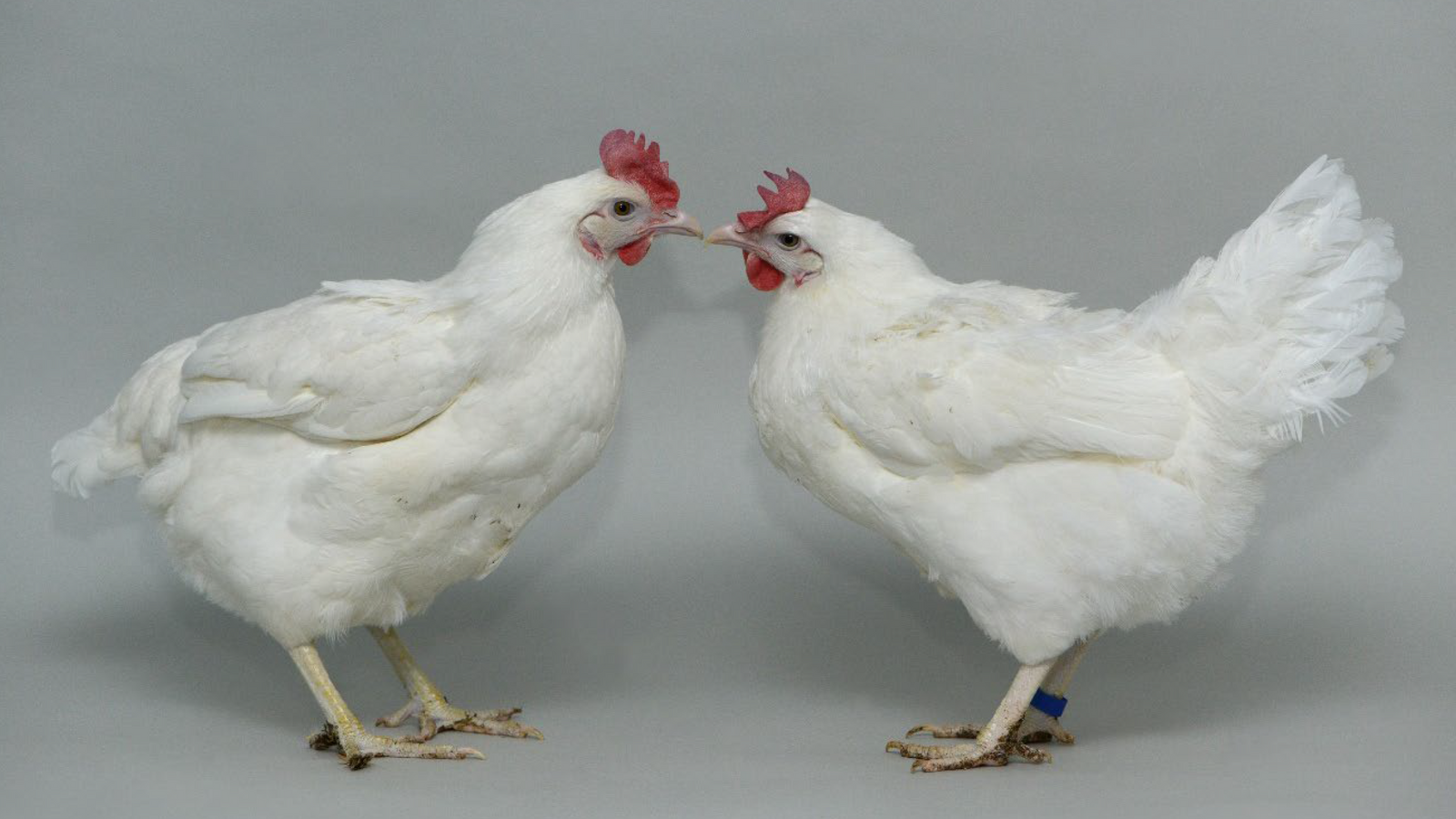Scientists have used genetic “scissors” to create chickens able to resist being infected with bird flu.
The breakthrough suggests flocks could be protected from the strain of the disease that has spread rapidly around the world in wild birds.
More than eight million poultry have died or been culled as a result of outbreaks in the UK since 2021.
However, the scientists warn more work is needed to stamp out any chance the gene editing technique could lead to the virus mutating and potentially taking a step towards causing human infections.
Researchers at the University of Edinburgh and Imperial College London used a precise molecular-level scissor technique to cut and edit the DNA in a gene called ANP32A.
The gene has a biological function in healthy chicken cells. But when cells are infected with bird flu, the virus hijacks the gene to make more copies of itself.
However, the research showed that when chickens with the altered gene were exposed to a typical dose of the virus, nine out of 10 were able to resist infection.
Just one chicken released small quantities of virus for a day or two, according to results published in the journal Nature Communications.
The birds remained healthy and continued to lay eggs over the two years of the study.
‘We are not there yet’
Professor Wendy Barclay, one of the lead authors, said: “This was a proof of concept that we can move towards making chickens resistant to virus, but we are not there yet.”
She explained the blocking effect of gene editing wasn’t complete.
When the dose of virus was raised by 1,000 times – a far higher level than would be naturally encountered – around half the chickens had breakthrough infections.
Significantly, the scientists also identified mutations in the virus as it tried to evolve and take back control of the ANP32A gene.
Further lab tests showed the mutated virus had some ability to use a version of the ANP32A gene found in human cells, but was not able to cause an infection.
Read more:
Bird flu outbreak poses ‘significant threat’ to UK seabird colonies
Owners urged to keep pets indoors
Professor Barclay said the finding showed caution was needed.
“What we don’t want to do is make the virus any more risky than it already is,” she said.
“The fact that we are taking a step in the direction of making the virus more able to infect other species is not something we want to do at all.”
The bird flu virus would need to go through several major changes in different genes for it to be able to infect mammalian cells.
Professor Barclay said targeting the ANP32A gene would not be “driving the evolution of the next pandemic, but may [lead to] mutations which are not desirable.
“We would need more robust edits to really shut down virus replication.”
Please use Chrome browser for a more accessible video player
The scientists have begun tests with chicken cells that have three edited genes. Lab experiments showed they were completely resistant to the virus.
As well as much more research being needed, there are still regulatory hurdles to overcome before the technique is used to produce flu-resistant flocks for farmers.
Parliament has passed a “precision breeding” bill allowing gene editing to be used in plants and animals. But further regulations are required before they can be consumed as food.
Gene editing is more precise than controversial genetic modification techniques and no genes are introduced from other species.






















